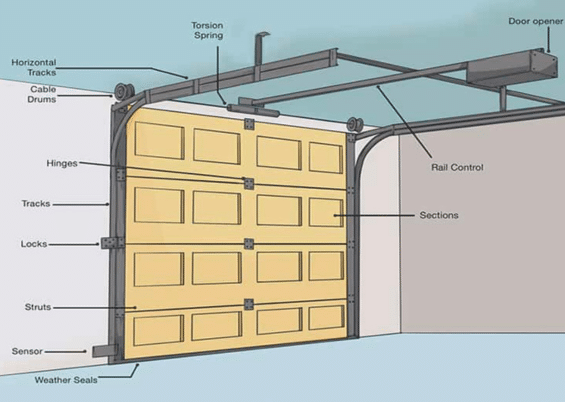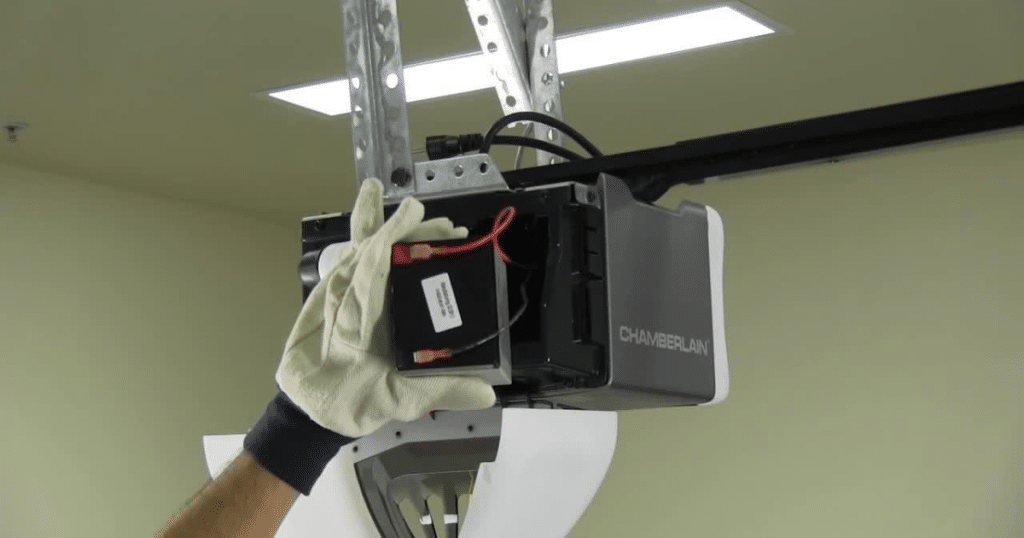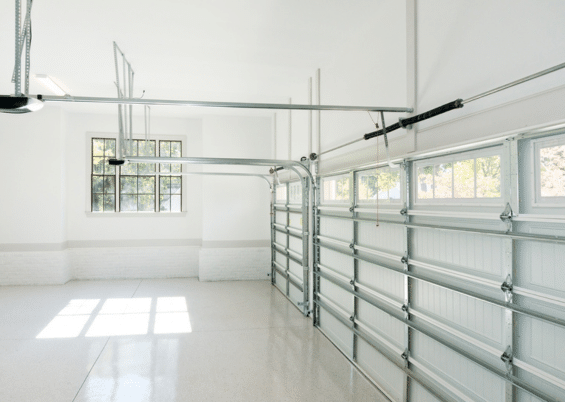From panels to tracks, explore the anatomy of a garage door and discover how each part contributes to smooth operation.
Your garage door is one of the most significant moving components in your home, playing a crucial role in convenience, security, and the overall appearance of your home. Yet, many homeowners rarely think about how it operates until something goes wrong. Understanding the anatomy of garage door systems empowers you to maintain them better and know when to call in the experts.
Garage doors are intricate assemblies of mechanical and electrical parts that must work in perfect harmony. From the panels and rollers to the opener and sensors, every component has a unique function. This guide will give you a clear breakdown of the anatomy of garage door setups, making it easier to identify problems, perform routine maintenance, and make informed decisions about repairs or replacements.

Whether you are a DIY enthusiast, a curious homeowner, or someone seeking reliable professional help, knowing the anatomy of garage door mechanisms provides significant value. Let’s explore each component in detail and see how it all works together to keep your garage door functioning smoothly.
The Core Structure of a Garage Door
Garage Door Panels
The most visible part of any garage door is its panels. These horizontal sections make up the bulk of the door’s structure and can be constructed from steel, aluminum, wood, or composite materials. They are designed for both durability and aesthetic appeal.
Panels are connected by hinges that allow them to bend as the door moves along its tracks. Insulated panels add energy efficiency and soundproofing, which is particularly valuable in attached garages.
Hinges and Brackets
Hinges are essential for connecting each panel, allowing smooth articulation as the door opens and closes. Brackets hold the rollers and provide structural stability, ensuring the door stays aligned on its tracks.
Garage Door Tracks
Tracks guide the garage door’s movement, keeping it aligned from the floor to the ceiling. Vertical tracks mount on either side of the door opening, while horizontal tracks run along the ceiling. High-quality tracks reduce noise and wear, contributing to the door’s longevity.
The Lifting Mechanism: How It All Moves
Garage Door Springs
A critical component of the anatomy of garage door systems is the spring mechanism, which counterbalances the door’s weight. There are two primary types:
- Torsion Springs: Mounted above the door, these springs twist to store and release energy.
- Extension Springs: Positioned alongside the horizontal tracks, these springs expand and contract to lift the door.
Springs make it possible to lift a heavy garage door with minimal effort. However, they are under extreme tension and should only be adjusted by professionals.
Garage Door Cables
Cables work in tandem with springs to raise and lower the door. Made of strong steel wire, they attach to the bottom brackets of the door and wind around drums as the door operates. Frayed or broken cables can cause the door to become unbalanced and unsafe.
Rollers
Rollers allow the door to move smoothly along the tracks. They can be made of nylon, steel, or plastic, with nylon rollers generally offering quieter operation and greater durability.
Power and Automation Components

Garage Door Opener
The opener is an electric motor that automates the opening and closing process. It typically mounts on the ceiling and connects to the door via a rail and trolley system. Openers come with features like remote controls, keypads, smart home integration, and battery backup.
Remote Controls and Keypads
Remote controls provide convenience by allowing you to open and close the door from your vehicle. Wall-mounted keypads add another layer of accessibility, enabling secure entry without needing a remote.
Safety Sensors
Modern garage doors are equipped with photoelectric safety sensors mounted near the floor on either side of the opening. These sensors detect obstacles and reverse the door’s movement if something is in its path, preventing injuries and property damage.
Additional Important Components
Bottom Seal and Weatherstripping
The bottom seal prevents dirt, water, and pests from entering the garage. Weatherstripping around the sides and top of the door enhances insulation and energy efficiency, sealing gaps against drafts.
Drums and Bearings
Drums wind the cables and help maintain balanced movement. Bearings reduce friction in the moving parts, ensuring smooth and quiet operation.
Manual Release Handle
Every automatic garage door system includes a manual release handle, allowing you to disengage the opener and operate the door by hand during power outages or emergencies.
Why Knowing the Anatomy of Garage Door Matters

Understanding how a garage door system works isn’t just for professional technicians. Homeowners can gain a lot from learning the basic components and how they function. This knowledge helps with maintenance, troubleshooting, and safety, while also extending the life of your garage door.
Routine Maintenance
- Lubrication and Cleaning
Knowing which parts need regular lubrication—like rollers, hinges, and springs—can prevent rust, reduce noise, and keep the system running smoothly.
- Tightening and Adjustments
Loose bolts and brackets can lead to misalignment. Being familiar with the structure allows you to inspect and tighten parts before problems escalate.
Troubleshooting
- Identifying Common Issues
Understanding the different components helps you recognize issues such as misaligned tracks, faulty sensors, worn-out springs, or damaged cables.
- Effective Communication
When you can accurately describe the problem and its location, you’ll have more productive conversations with repair professionals and avoid unnecessary service calls.
Safety Awareness
- Recognizing Dangerous Components
Parts like torsion springs and cables operate under high tension and should only be handled by professionals. Knowing this helps prevent serious injuries.
- Knowing When to Call an Expert
A clear understanding of your system lets you judge when something is beyond DIY and needs professional inspection or repair.
Long-Term Benefits
- Extending System Lifespan
Consistent and informed maintenance can significantly extend the life of your garage door, reducing the need for frequent replacements.
- Saving Money and Time
Early detection of wear and tear prevents costly emergency repairs and increases the efficiency of any service or maintenance work.
Frequently Asked Questions
What are the parts of a garage door?
Garage doors consist of several key components, including panels, hinges, rollers, tracks, torsion or extension springs, and cables. The opener system includes the motor, rail, chain or belt, and safety sensors. These parts work together to lift, lower, and secure the door smoothly and safely.
What is the bottom part of a garage door called?
The bottom part of a garage door is called the bottom section or bottom panel. It typically includes a bottom seal or weather stripping to keep out debris and moisture. It may also house brackets for the lift cables.
What is the metal around the garage door called?
The metal around a garage door is often referred to as garage door trim or flashing. It helps seal the edges and provides a finished look. It can be made from aluminum or steel and may be painted to match the exterior.
What is the strip around the garage door called?
The strip around the garage door is called weatherstripping or a garage door seal. It lines the top, sides, and bottom of the door to block drafts, water, and pests. This improves insulation and energy efficiency.
What are garage door sections?
Garage door sections are the horizontal panels that make up the full height of the door. Most residential doors have 3 to 5 sections that are hinged together. These sections allow the door to bend and follow the track when opening or closing.
Conclusion
Understanding the anatomy of garage door components provides valuable insight into how they work and how to maintain them properly.
Regular inspections, timely maintenance, and awareness of common issues can prevent costly repairs and extend the life of your garage door. When in doubt, always consult experienced professionals to handle repairs and adjustments.
If you’re in the Anna, TX, area and need expert help with your garage door, Anna’s Best Garage & Overhead Doors is here to assist you. We offer reliable, high-quality services that ensure your garage door operates safely and efficiently.
End Note
Anna’s Best Garage & Overhead Doors is the leading local garage door service company in Anna, TX. As the most affordable contractor in the area, we understand the needs of our community and are committed to delivering exceptional value.
Our services include garage door repair, installation, maintenance, and more—all performed by experienced professionals. We take pride in our reputation for reliability and customer satisfaction.
Learn more about us, read helpful tips on our blog, or contact us today for a free consultation. We look forward to serving you and keeping your garage door in excellent working condition!
Anna’s Best Garage & Overhead Doors
1009 Mathew Dr, Anna, TX 75409, United States
+14696942469
